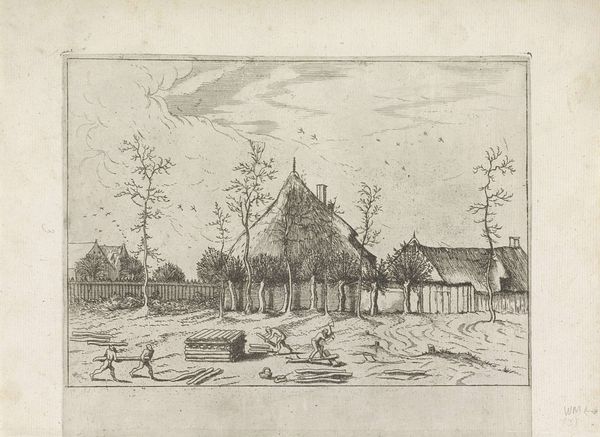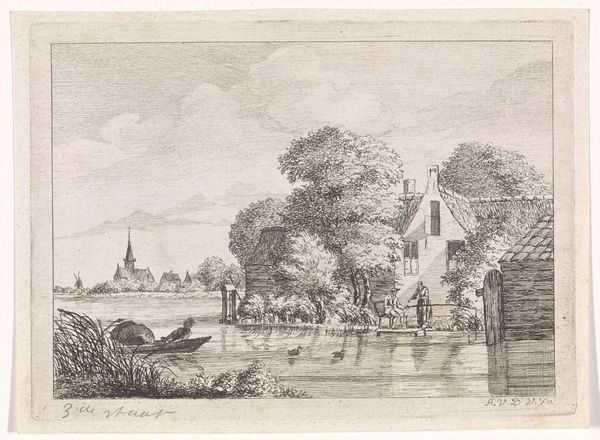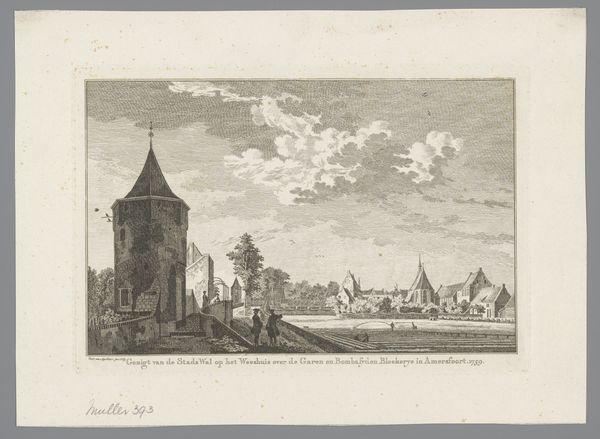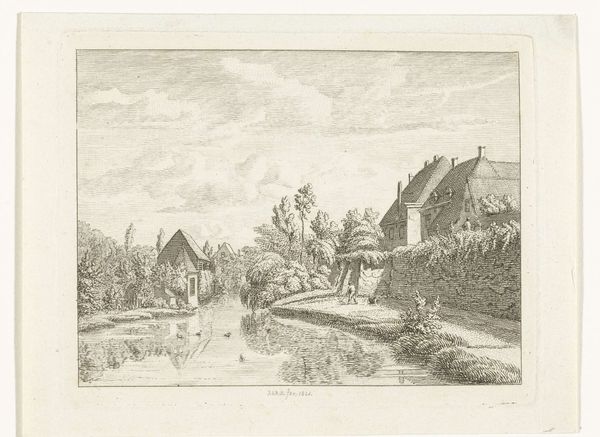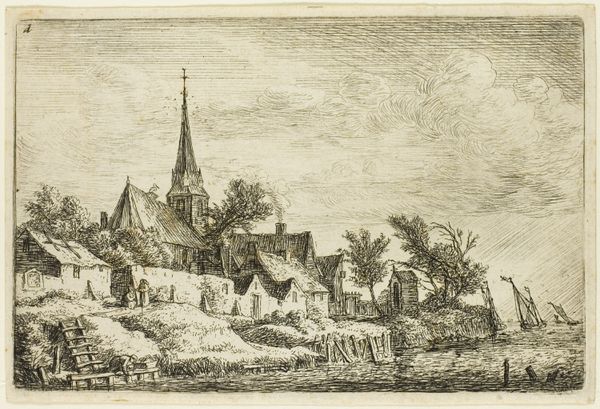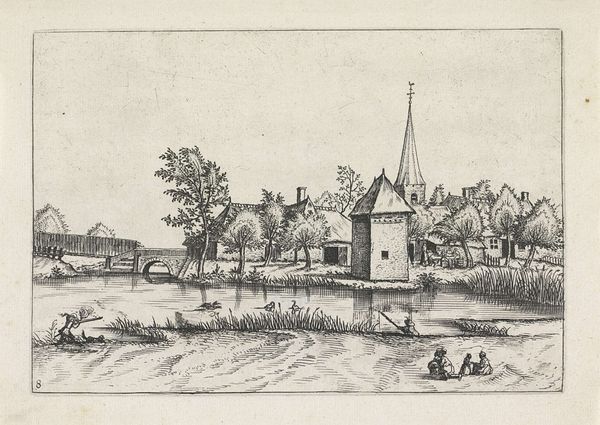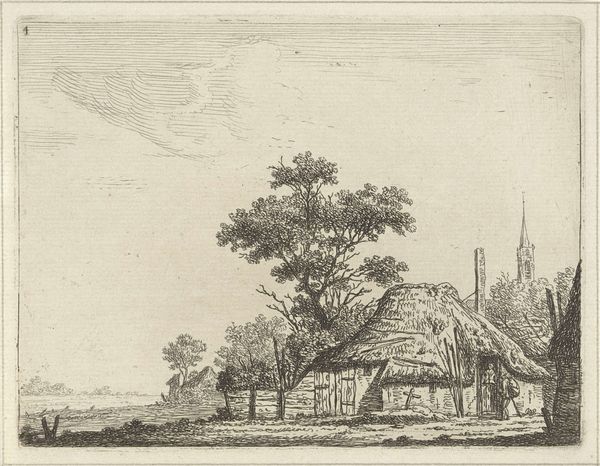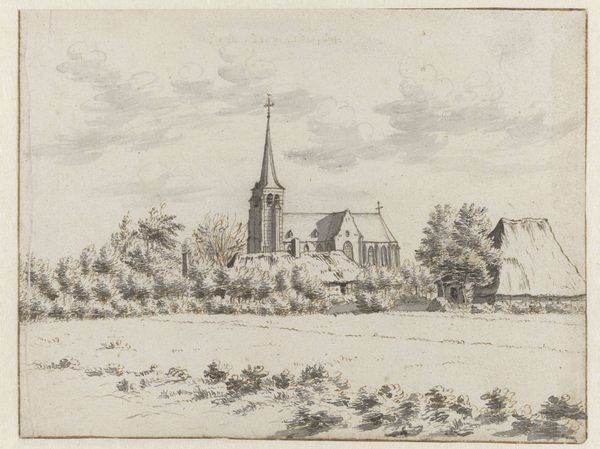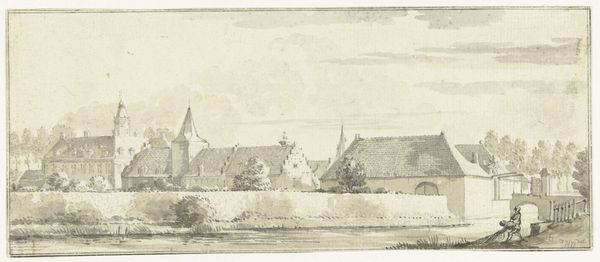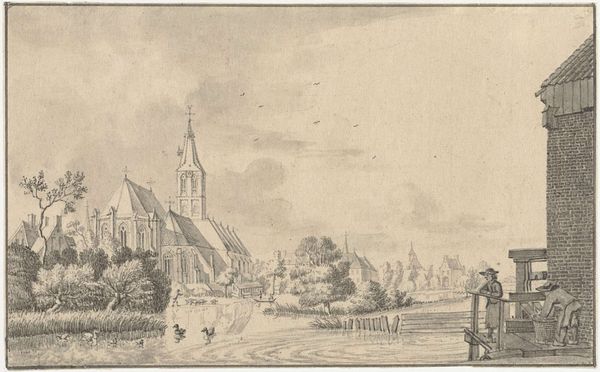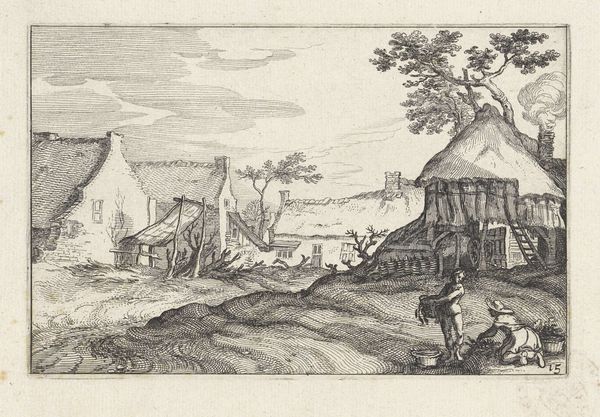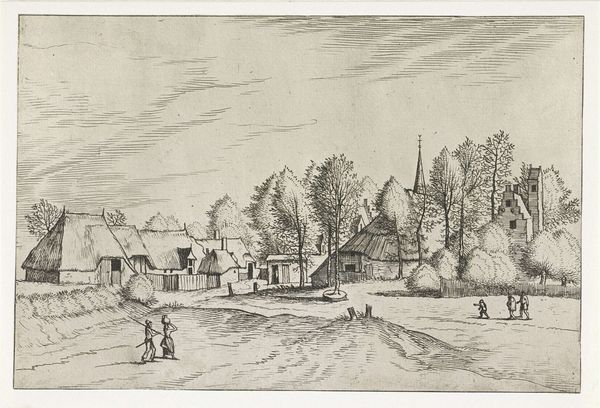
print, etching
# print
#
etching
#
pencil sketch
#
landscape
#
etching
#
realism
Dimensions: height 118 mm, width 182 mm
Copyright: Rijks Museum: Open Domain
Curator: It’s serene, isn’t it? The cool stillness of the water and the rather lonely structure in the background. Editor: Indeed. This etching, attributed to Cornelis Steffelaar and likely created sometime between 1807 and 1861, is entitled "Swans on the Water with a Castle in the Background". It seems Steffelaar was interested in capturing not just the picturesque, but also aspects of rural society during that era. Curator: It does seem idyllic at first glance, but there's something else going on too. The buildings, the castle... They feel disconnected from the swans. Like a power dynamic rendered subtly in landscape. Were there land disputes during this time in the Netherlands? The symbolism almost hints at it. Editor: Possibly. Etchings like this often served as visual records of the changing landscape due to agricultural reform or even early industrial impacts. Notice the precise rendering of architectural styles contrasted with the slightly looser treatment of the natural elements? That's Steffelaar grounding the piece in a specific social and economic context. The placement of the castle indeed could represent existing or aspiring power structures, especially with the suggestion of flags being raised on its property line. Curator: Right, and perhaps even commenting on who had access to that beauty and who was simply part of the scenery? Editor: Precisely! By showcasing a distinct landscape aesthetic of 19th-century Netherlands alongside these emerging class signifiers, Steffelaar engages us with crucial conversations around the public's access to nature and who determines those privileges. Curator: Thanks for illuminating the different elements. It goes far beyond being merely pretty; this piece quietly makes powerful assertions about the way landscapes both shaped, and were shaped by, those social realities. Editor: My pleasure. Reflecting on the print’s composition reinforces its complex interplay between the natural world and political structures—themes that still resonate today when we think about who is being given what visibility in today’s world.
Comments
No comments
Be the first to comment and join the conversation on the ultimate creative platform.
